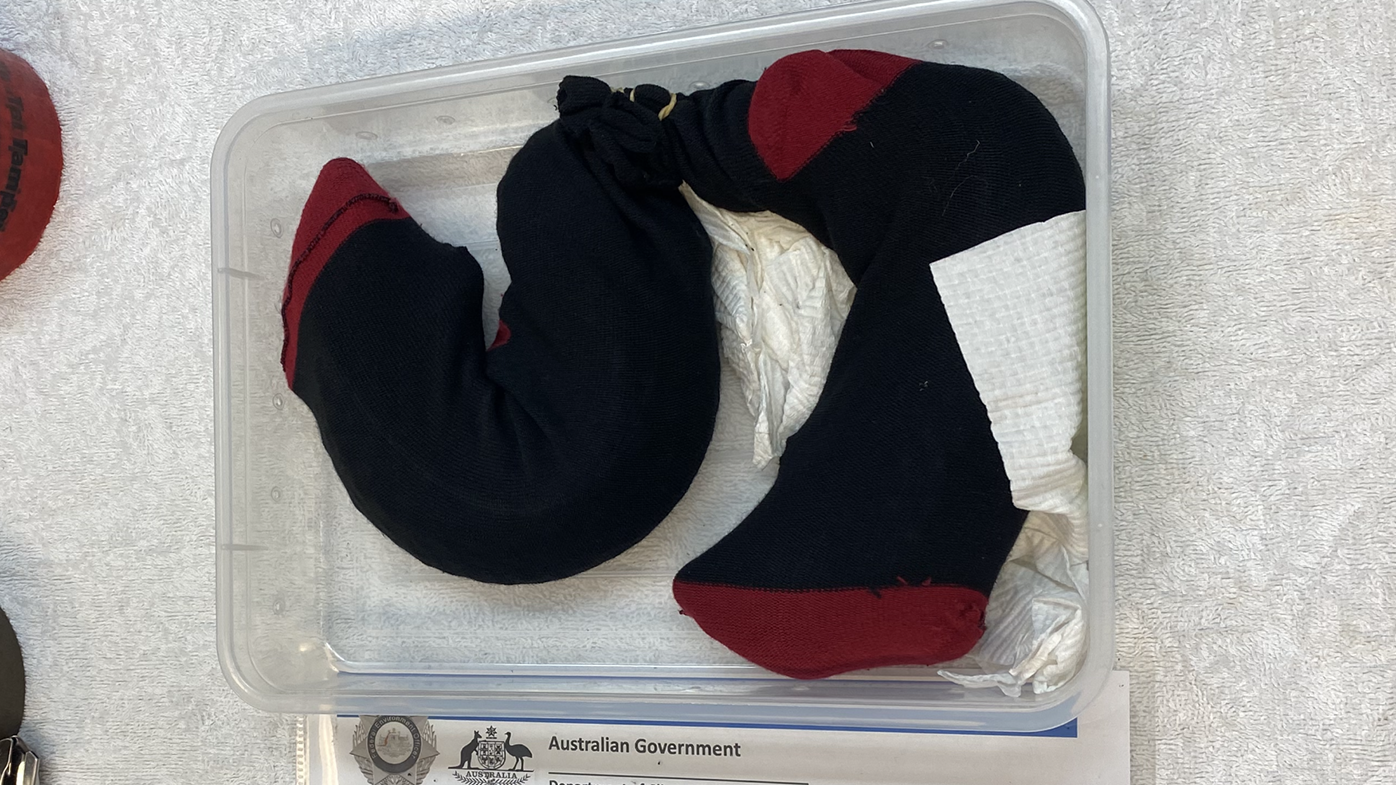
Two reptiles lie side-by-side in a shallow plastic storage tub. Holes have been drilled into the lid, which is pushed back to give prospective buyers a better look inside.
In most parts of Australia, these shingleback lizards can be found lounging in backyards. Here, at an overseas reptile expo, a breeding pair can go for up to $25,000.
They’re not the only native species being sold for a small fortune in the booming exotic pet trade across Europe, Asia and the USA – but they are the most likely to have been illegally smuggled out of Australia.
READ MORE: Trump claims debate win, rules out rematch in bizarre post
A new, first of its kind study of the global trading of Australian reptiles and amphibians revealed that 170 native species are being sold overseas for mammoth profits, including 33 species never before seen on the international market.
“It was definitely unexpected to find that many,” Sebastian Chekunov, who led the four-year research project out of the University of Adelaide, told 9news.com.au.
Data was taken from public databases, government seizure records and overseas trade shows, as well overseas pet store websites, reptile forums and social media using web-scraping software.
Have you got a story? Contact reporter Maddison Leach at mleach@nine.com.au
What the team found was that despite the fact that Australia banned the commercial export of all live native animals in 1982, lizards, pythons and frogs are still being taken from the wild, smuggled out of the country and put into the exotic pet trade abroad.
“We know anecdotally that Australian species are popular in trade, valued for their rarity and uniqueness, but there was no collated list of all the species that are traded,” Chekunov said, so the team set out to create one.
What they found was alarming.
Not only are new Australian species appearing on the international market, suggesting they’ve been smuggled out of the country in recent years, exotic pet owners abroad are willing to pay a fortune for the rarest and most coveted specimens.
“The most expensive species overall is probably the shingleback, with its rare subspecies and localities,” Chekunov said.
Dr Phoebe Meagher, Wildlife Conservation Officer (WCO) at Taronga Zoo in Sydney, told 9news.com.au she wasn’t surprised by the claims.
Of the live seizure records reviewed in the study, more than half were shinglebacks, which she’s personally found stuffed inside plush toys and Pringles containers in her work to combat illegal wildlife trade.
Other native reptiles have been jammed by smugglers into chocolate boxes, wrapped in socks and gaffer tape, or packed inside parcels filled with toy dinosaurs.
The terrible conditions cause some animals to die on the journey, but Chekunov says smugglers can stand to make so much off a single animal that it doesn’t matter if they lose five in the process. Meagher agrees.
“You could get a pair of blue tongue [lizards] for $250 domestically, but they’re about 28 times the value overseas,” she told 9news. “For a quick, easy grab from the wild, there’s quite a high profit to be made.”
Though some illegally smuggled animals are bred for purpose by backyard breeders, many are taken directly from the wild, especially species like shinglebacks that don’t breed well in captivity.
“[Poachers] will grab them, put them in a bag and put them in their car,” Meagher said.
“They often will then take those animals to another person who then has a whole mix of wildlife, usually in their house, and they’re the people that … are sending them overseas.”
READ MORE: Woman chains herself to car during Melbourne protests
Once overseas, restrictions on trading Australian animals are usually limited, which is why it’s possible to find things like shinglebacks, knob-tailed geckos, and other native reptiles on display in plastic tubs and takeout containers at international trade shows.
While many of the animals for sale will have been legally bred from animals that were taken out of Australia before the ban in the 1980s, others will have been smuggled abroad illegally or bred from smuggled animals.
“They just forge the documents and say they’ve all been bred in captivity,” Meagher said of the latter. “That’s a massive loophole that criminals, particularly overseas, are taking advantage of.”
She’s trying to close that loophole.
Taronga’s Forensic team recently developed a handheld x-ray fluorescence (XRF) device that can scan elements in a reptile’s scales to determine if it was raised in captivity or taken from the wild.
It’s been a gamechanger in determining the origins of seized species like shinglebacks, which are so popular among smugglers.
Meagher said there’s also ongoing work to develop automated AI screening programs that will be able to scan and spot concealed animals in post parcels.
“What I love best about it is using science to fight crime,” she said, “we just need to be putting more resources into this problem, because it’s only escalating.”
READ MORE: An explosive California wildfire looked like a bomb went off from space
Data from the Department of Climate Change, Energy, the Environment shows that over 800 smuggled animals were intercepted in the last 18 months alone. Meagher predicts many more went undetected.
“Here in Australia, it’s a multi-million dollar criminal industry. We’re seeing hundreds of thousands of reptiles being smuggled out of Australia annually … and we’re only looking at postal pathways,” she said.
“Even the people that work in the industry are only aware of the tip of the iceberg.”
FOLLOW US ON WHATSAPP HERE: Stay across all the latest in breaking news, celebrity and sport via our WhatsApp channel. No comments, no algorithm and nobody can see your private details.
links to content on ABC
9News





